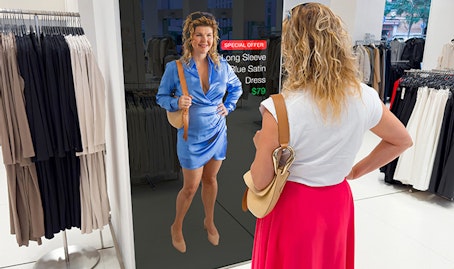Perspectives

‘FOMO,’ or ‘Fear of Missing Out,’ was first written about by marketing strategist, Dan Herman, in 2000. It is the idea that we feel anxiety or worry when missing out on exciting or rewarding experiences.
The concept of FOMO has become a common part of pop culture and is used to describe any situation in which we feel ‘left out.’
But FOMO is not just a trend that is ‘hip with the kids’ – it presents in various principles of behavioural science, for example:
- Loss Aversion: we prefer to avoid losses over acquiring gains. Fear of regret from missing an opportunity leads to a desire to participate to close the gap of discomfort.
- Social Proof and Herd Behaviour: we are influenced by the actions and opinions of others when making decisions. FOMO encourages us to follow the crowd.
- Scarcity Effect: we place more value on things that seem scarce or in limited supply. Even if a product or experience is not objectively limited, FOMO can make us feel like it is, because we fear it won’t be available to us down the line.
- Present Bias: we prioritise immediate rewards over long-term benefits. FOMO amplifies a focus on the short-term payoff.
FOMO also has a basis in neuroscience, particularly in how our brains anticipate rewards.
Because FOMO occurs when we feel an exciting or rewarding experience is happening without us; the anticipation of missing out activates the brain’s dopamine (‘reward chemical’) system. This triggers a desire to be part of that experience to gain the reward that we believe others are receiving.
Dopamine is released not only when we receive rewards but also when we anticipate them. This anticipatory dopamine release motivates us to take actions that we believe will result in pleasure or satisfaction.
Why should growing brands care about FOMO?
As much as consumers like to think they make purchase decisions rationally and deliberately, they are largely driven by 1) emotion and 2) heuristics (mental shortcuts).
Creating a sense of FOMO around your brand taps into both of these purchase drivers:
- Emotion: FOMO draws on consumers’ emotional need to belong and avoid regret, motivating them to purchase before they miss out.
- Heuristics: FOMO signals high demand and exclusivity, cueing consumers that a product, service or experience is valuable.
Consumers want to avoid FOMO and are willing to make a purchase to close the divide between what they have and what others have.
And if ever there was a time to leverage the phenomenon of FOMO, it’s now:
- Consumers are experiencing information overload and are relying more on mental shortcuts to help them make purchase decisions. A crowded market also means standing out as a brand becomes more difficult. Leveraging FOMO can help your brand cut through the noise and connect with consumers in a unique way.
- FOMO feeds into the growing demand for immediacy. Swiping on dating apps, same-day delivery, automating tasks with AI… all of these satisfy our dopamine-led desire for instant gratification.
- The rise of influencer culture and user-generated content breeds social comparison and the desire to live up to the social and economic standards set by peers.
Tactics: How brands can leverage FOMO
- Core Strategies: Tangible Levers for FOMO
Leveraging FOMO means generating feelings of exclusivity and urgency. You want consumers to feel like they are ‘missing out’ by not engaging with your brand, and there are various ways to enable this:
- Social Proof: when people see or hear of others enjoying your brand (through endorsements, user-generated content, reviews, testimonials), it makes others want to join in, so they don’t miss out.
- Early or Exclusive Access: offering a select group early access to new products, features or experiences makes people who don’t get early access feel left behind, driving their desire to be part of the next wave of access.
- Limited or Time-Sensitive Offers: when products or deals are available for only a short time or in limited quantities, it creates scarcity. This makes people want to act quickly so they don’t miss a valuable opportunity that others are benefitting from.
- Social Proof: when people see or hear of others enjoying your brand (through endorsements, user-generated content, reviews, testimonials), it makes others want to join in, so they don’t miss out.
- FOMO in Action: Industry Use Cases
Success of the above tactics varies by industry, but FOMO can be harnessed even in those categories characterised by more rational purchasing behaviour:
- Entertainment & Media: People don’t want to miss out on what everyone else is watching. Use social proof to create FOMO by highlighting trending shows, viral videos, or new releases, e.g., #1 movie in the UK today.
- Financial Services: Consumers tend to be more cautious and deliberate in their financial decision-making. Create FOMO by promoting limited-time lower rates, exclusive bonus offers for early sign-ups, or rewards that expire after a certain date. Highlight the risk of missing out on locking in favourable terms or exclusive benefits.
- FMCG: Consumers tend to stick to their routines when buying everyday items but are tempted by novelty or better deals. Create FOMO through limited-edition packaging, combo offers, or limited-time discounts on popular products.
- Food & Beverage: Create FOMO by offering limited-time products or menu items. Leverage the popular trend of influencer food reviews on social media to promote these items.
- Health & Wellness: Embarking on a health & wellness journey can feel daunting. Create FOMO by offering personalised health plans for those who sign up by a deadline or by providing limited enrolment windows for classes or programs.
- Insurance: Like finance, the decision journey for insurance is typically more high-involvement and is underpinned by trust. Create FOMO by offering discounts or enhanced coverage if you sign up before a certain date, highlight policy renewals with benefits that will expire soon (e.g., last chance to lock in lower rates before the new year).
- Luxury Goods: Buyers of luxury products value exclusivity and status. Create FOMO by releasing limited-edition collections, offering private shopping events, or exclusive pre-launch access to loyal customers. Emphasize the unique opportunity to own something rare and highlight when these offers will no longer be available.
- Retail: Consumers often rely on offers or hesitate on big-ticket purchases. Create FOMO by launching flash deals, limited edition product drops, highlighting popular or low-stock items, all to encourage consumers to act before they miss out.
- Telco: Consumers are typically locked into long-term contracts, which means a high opportunity cost of switching providers. Create FOMO by offering exclusive mobile or broadband deals, or time-sensitive discounts on contract plans (e.g., best deals only available for a limited time, or you must be x months out from your contract renewal with your current provider).
- Travel & Hospitality: Travel decisions involve planning and comparing. Create FOMO by promoting limited-time discounts or exclusive access to perks for those who book early. Utilise scarcity with alerts like ‘only 5 seats left.’
- Entertainment & Media: People don’t want to miss out on what everyone else is watching. Use social proof to create FOMO by highlighting trending shows, viral videos, or new releases, e.g., #1 movie in the UK today.
- Audience Nuances: Who’s Driven by FOMO?
FOMO presents differently depending on the audience but can be leveraged to appeal to both younger and older cohorts:
- Younger consumers (Gen Z, Millennials) tend to be more easily influenced by FOMO. In the process of establishing their identities, they often look to their peers for social cues on what to feel, how to behave and, what to buy. Growing up with social media means they have also been exposed to a continuous comparison loop – they are used to experiencing FOMO and would therefore be more inherently responsive to marketing that leverages it.
- Older consumers (Gen X, Baby Boomers) still experience FOMO, but it is less motivated by peer pressure and the desire to ‘fit in.’ Instead, their degree of FOMO is often more values-driven and linked to long-term goals—like ensuring a comfortable retirement, maintaining independence, or enjoying meaningful experiences within their community. This more pragmatic approach to FOMO means they would be most responsive to marketing which signals an impact on their lifestyle, security, or legacy.
- Younger consumers (Gen Z, Millennials) tend to be more easily influenced by FOMO. In the process of establishing their identities, they often look to their peers for social cues on what to feel, how to behave and, what to buy. Growing up with social media means they have also been exposed to a continuous comparison loop – they are used to experiencing FOMO and would therefore be more inherently responsive to marketing that leverages it.
- Social Media: The FOMO Engine
One of the most effective ways to leverage FOMO (especially for younger audiences) is by utilising the very platform that powers it: social media.
Humans have an innate desire to feel connected and included. When we anticipate a social connection, our dopamine levels rise because there is promise of a potential reward. Social media platforms are designed to exploit the brain’s reward system to keep its users engaged.
As a result, social media’s existing infrastructure as a hotbed for FOMO offers brands a ready-made channel to boost buying behaviour by capitalising on consumers’ natural desire to belong.
All to say, if you want to build FOMO around your brand, and you’re not making use of social media – start.With social, you are providing consumers with
- real-time influence, which increases urgency to purchase
- endorsements by people ‘like them,’ which drives a desire to participate
- easy access to your offerings and benefits, which facilitates engagement (e.g., likes, comments), which fast-tracks FOMO
Ethical considerations & best practices
Of course, exploiting FOMO to drive choice can be risky and unethical if not wielded properly. Encouraging consumers to make sub-optimal decisions under pressure could damage a brand’s reputation in the long run. That said, it is entirely possible to use FOMO in a way that doesn’t create unrealistic expectations for consumers:
- Limit the use of FOMO. Incorporate it as part of a diversified marketing strategy that also includes a focus on long-term customer engagement and brand storytelling by use of authentic messaging.
- Provide real value. Ensure products/services are aligned with the needs and desires of your customers. Market a product, not just an idea.
- Be transparent. If you are using scarcity to drive FOMO, ensure clear communication around limited offers, like stock availability and time constraints.
- Use genuine testimonials or endorsements. Leverage social proof with real, verified customer reviews and authentic product demonstrations to build trust.
Sustaining FOMO: From flashes to loyalty
Brands can’t just rely on bursts of activity to drive equity. FOMO should be used as a supplement to other brand-building marketing efforts, but there are also ways to extend the life of FOMO to foster attachment to your brand:
- Loyalty programs with exclusive rewards to encourage consumers to engage with your brand regularly so as not to miss out on special perks like discounts and product launches (e.g., collect points with every purchase to earn a reward).
- Subscriptions with a gift each month or a discount over several months that consumers wouldn’t otherwise earn with a one-time purchase.
- Referral programs that offer rewards to both encourage engagement with the brand and act as a mechanism of social proof as consumers won’t want to miss out on what their friends or peers are gaining.
- Limited access to popular products or new releases throughout the year to create a sense of exclusivity.
- Personalised products or offers to intensify the feeling that consumers are missing out on something uniquely beneficial to them if they don’t take advantage.

At the end of the day, FOMO, by definition, is fleeting. We think of FOMO as fear of missing out on a specific moment or opportunity, but brands need to drive sustained purchasing behaviour – it’s about creating an emotional tigger that converts short-term urgency to lasting brand attachment.
– Lauren Friedman, Strategy Director, Hall & Partners
Creative, award-winning examples
While we have touched on how brands can use FOMO tactically – through specific marketing techniques and offers – the most powerful brands go further. They harness FOMO creatively, using storytelling and cultural narratives to build lasting connections and long-term brand equity. Let’s look at some recent award-winning examples that demonstrate the creative power of FOMO in advertising.
- 2025 Grand Prix Cannes Lions award-winner for social & creator, VASELINE VERIFIED (Unilever, Ogilvy), is a prime example of how to cleverly use FOMO to both build hype and reemphasise a brand’s authority in the market. The ad taps into the modern obsession with being ‘verified’ on social media, using the infamous ‘blue tick’ as a symbol of social validation. Vaseline scientists tested the most viral Vaseline ‘hacks’ in their lab and officially ‘verified’ those proven to work. Verified hacks created by social media creators were then turned into Vaseline ads to promote the brand. The campaign leaned on FOMO to spark a sense of urgency around discovering the versatile uses for Vaseline – from skincare to lip protection to creating a soft-focus filter effect on your camera lens. The campaign verified hacks from 450+ creators, resulting in 63M+ social interactions and leading to a 43% increase in sales.
- Another example, also a 2025 Cannes Lions award-winner, JORDAN: UNBANNABLE (Nike, Wieden+Kennedy), uses FOMO in an aspirational way to connect with consumers and build long-term brand equity. The ad imagines a world where Nike discontinued the original Air Jordan 1 (1984) to comply with the NBA’s uniform policy. In reality, Nike paid a $5k fine every game to allow Jordan to continue wearing the shoes – taking the stance that ‘you can’t ban greatness.’ The ad plays on our desire to be a part of a cultural movement, a legacy. It implies that not being in the Jordan community means you miss out on greatness itself. The ad reignited the rebellious spirit of Air Jordan amongst modern consumers, helping to restore its cultural significance and exclusivity following years of consumer fatigue and oversaturation by the brand.
In conclusion
FOMO is a powerful psychological driver that influences consumer behaviour across industries and demographics. When used thoughtfully and ethically, it can create urgency, amplify emotional engagement, and help your brand stand out in an increasingly crowded marketplace. Understanding the nuances of FOMO — from the dopamine-driven anticipation to the impact of social proof and scarcity — enables brands to craft targeted strategies that resonate deeply with their audiences.
Whether you’re aiming to tap into the immediacy of FOMO marketing to drive awareness and hype, or build lasting connection and equity, leveraging FOMO effectively requires a blend of data-driven insights, creative storytelling, and authentic engagement.
As experts in consumer research and brand strategy, Hall & Partners combines behavioural science with deep market understanding to uncover what truly motivates your customers. We can help you identify the unique triggers of FOMO within your category and target audience and craft compelling messaging to drive meaningful and sustained consumer action.
Talk to our team of experts
Learn how we can deliver actionable insights and creativity to drive brand growth.








